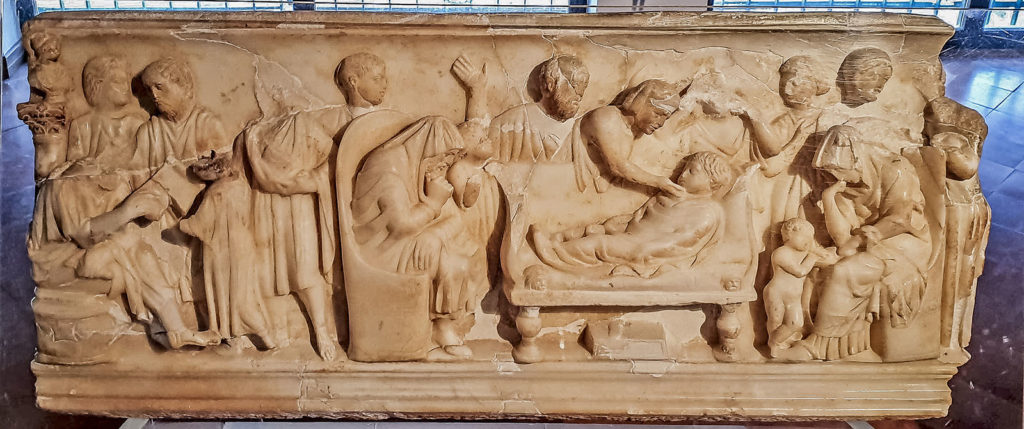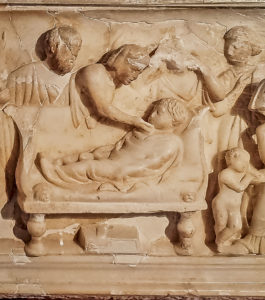Established with the advent of the cult of burial in the 2nd century AD, sarcophagi were very precious objects that only patrons with considerable economic availability could afford.
These artefacts, often very valuable, had the function of guarding people’s memories and manifesting the values of a
gens
to all those who observed them. In the area surrounding the Tomb of Theron a marble sarcophagus of the Hadrian period (2nd century AD) was found, carved on three sides and probably destined to be placed against the wall of a burial chamber.

Called the Sarcophagus of the Child, with extreme delicateness, skilful chisels have told stories of the daily life of the boy, who probably died in adolescence.
 On the front is the scene of his death, with the young boy lying on his bed and surrounded by his parents and other individuals; the effect of a woman leaning in to caress his face is particular.
On the front is the scene of his death, with the young boy lying on his bed and surrounded by his parents and other individuals; the effect of a woman leaning in to caress his face is particular.
On the other hand, the two sides depict the moment of his birth and a moment of play, with the baby on a small cart pulled by two sheep. Today the sarcophagus is kept at the Regional Archaeological Museum “Pietro Griffo”, where there is also another sarcophagus, of which only the front is preserved, on which stand out two theatrical masks that inspired the bronze sculpture placed on the tomb of Pirandello, at his
birthplace
in the Caos locality.